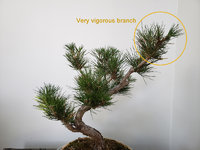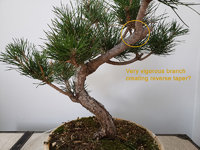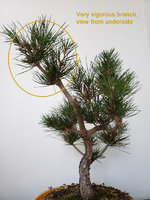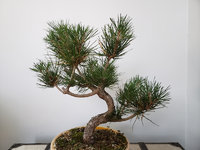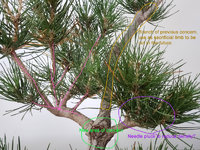Hi everyone. Some advice/thoughts would be much appreciated to set me on the right path. I've read a lot on bonsai (to the point of confusing myself) but a total noob in practice so now I'm just like deer in headlights  ... totally frozen. I've had this JRP for about 1.5 years, haven't repotted since my acquisition, cautiously candle pruned in spring, bud selected to 2 on the strong branches late Sept./early Oct. and that's about it. My concern is that this tree has this long awkward branch that is very vigorous (see 1st image) and it looks to me that it could be starting to create a reverse taper (see 2nd image). Any thoughts on where to go from here? Shorten branch or maybe just reduce buds & needles? Or, leave it alone for now?
... totally frozen. I've had this JRP for about 1.5 years, haven't repotted since my acquisition, cautiously candle pruned in spring, bud selected to 2 on the strong branches late Sept./early Oct. and that's about it. My concern is that this tree has this long awkward branch that is very vigorous (see 1st image) and it looks to me that it could be starting to create a reverse taper (see 2nd image). Any thoughts on where to go from here? Shorten branch or maybe just reduce buds & needles? Or, leave it alone for now?
